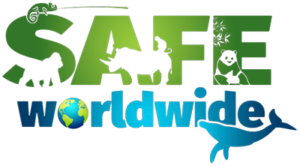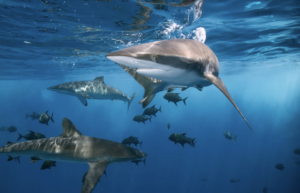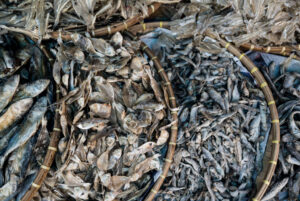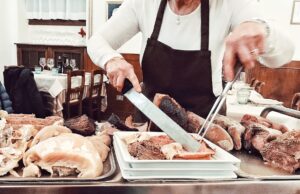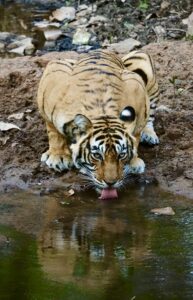
Bushmeat Trade in the Congo
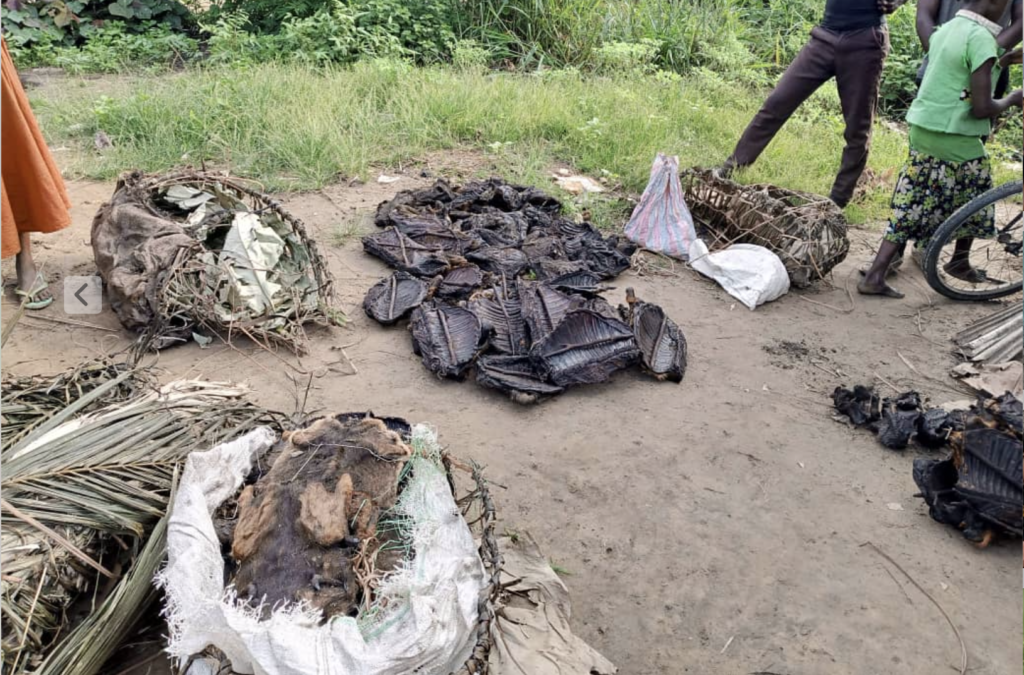
Rachel Spaulding
Over 300 species of mammals are threatened with extinction. This includes Great Apes and many endemic species of critically endangered old-world monkeys living in the Congo. Poachers target these animals to sell them alive as exotic pets or in parts to various industries. This includes the bushmeat trade in the Congo, which directly threatens the region’s precious species.
The Congo Basin, commonly referred to as the Congo, is the second largest tropical rainforest in the world. It spans six African countries and houses an estimated 10,000 plant species. Additionally, the Congo is home to some of the most endangered primates such as the bonobo, the moustached guenon, and the mountain gorilla. This biodiversity hotspot allows life to flourish and has supported human life for an estimated 50,000 years. Now, humans are its biggest threat.
What is bushmeat?
Bushmeat is a catch-all term that refers to the meat of wild mammals, birds, reptiles and amphibians that are hunted across the world for human consumption. It varies from field rats to primates. The United Nations defines bushmeat trade as the commercial hunting and selling of wild animal meat. This differs from subsistence hunting, which provides food to support a family or village’s survival.
Today, bushmeat is popular in poor and rural areas where it is the only available source of protein. Bushmeat contributes to 80-90% of animal-based protein consumption in certain rural regions within West and Central Africa. If bushmeat was consumed only within indigenous and local communities, its impact on animal populations would not be so drastic. But demand for bushmeat in international markets has grown. Many people believe certain animal parts have medicinal qualities or consider them delicacies. Thousands of pounds of bushmeat enter the US each year, and 5 tons enter Europe every week. This is in addition to the estimated 1 million tons of bushmeat consumed each year in the Democratic Republic of Congo (DRC) alone.
Oftentimes, people smuggle meat into the US not for their own consumption but to sell in open markets across the country. Bushmeat is known to be readily available in cities such as Queens, New York, Washington D.C., and Minneapolis. Some people consume it for a “taste of home.”
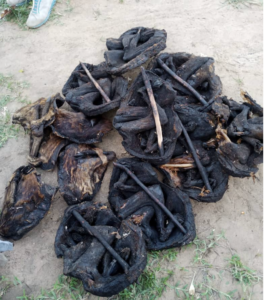
The dangers of wet markets
Bushmeat is usually taken to wet markets to be sold. These markets usually showcase piles of carcasses, raw and untreated meats, and animals who are still alive in cages. This, coupled with the fact that bushmeat is often salted, smoked, or dried, is not enough to ensure that the products are not contaminated. Zoonotic diseases are common. Some notable pathogens that have been linked to human contact and consumption of bushmeat include HIV, Ebola and Monkeypox. Beyond conservation, these diseases’ severity and contagiousness make the bushmeat trade a critical global health concern.
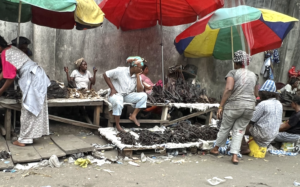
The bushmeat trade is illegal
When bushmeat involves legally protected animals or smuggling, it becomes part of the illegal wildlife trade. Illegal wildlife trafficking is the 4th most lucrative illegal practice in the world, behind drugs, arms and human trafficking. Primates are some of the most intelligent and beautiful animals. Tragically, they are also some of the most commercially valuable. Poachers look for groups of high-value primates, kill the adults they intend to sell for meat and parts, and kidnap the surviving babies to sell in the illegal wildlife trade. All four primate sanctuaries in the DRC are filled with animals rescued from this nefarious activity.
Mining and logging boost the bushmeat trade in the Congo
In recent years, the Congo has experienced an influx of industrial mining and logging operations. An unexpected consequence of this is how it aids poachers and traffickers looking for bushmeat. Road development stretches into previously untouched parts of the rainforest that used to be difficult to reach. Now, remote areas housing endangered and valuable wildlife are accessible to people, including poachers.
That’s not the only way mining expansion impacts the bushmeat trade in the Congo. People hired to work in the mines face a lack of food and other resources. Miners in the Congo often resort to hunting wildlife, including primates, for food.
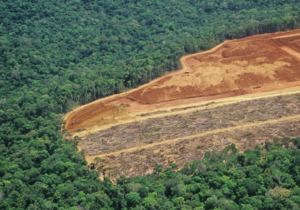
What are we doing about all this?
The US government has created task forces to fight illegal wildlife trafficking. These taskforces target poaching networks in the countries where trafficked animals are sourced. They also intercept illegal products when they enter the US. Important legislation has also been passed. For instance, the Eliminate, Neutralize, and Disrupt (END) Wildlife Trafficking Act created a Presidential Task Force on Wildlife Trafficking and various anti-poaching programs. Additionally, the US Fish and Wildlife Service created the Combating Wildlife Trafficking (CWT) program. This works internationally to protect wildlife from illegal trade. This program utilizes a variety of approaches including proposing legislation, grant funding local programs, and education initiatives.
SAFE Worldwide is staunch supporter of stopping poaching, wildlife trafficking, and the bushmeat trade. Our anti-poaching program includes public education, promoting human-wildlife coexistence, and partnering with conservation organizations working in the field to save animals targeted by these illicit activities.
JACK Sanctuary rescues bushmeat trade victims
Sanctuaries in the Congo are working to protect primates who are victims of the bushmeat and illegal wildlife trade. SAFE Worldwide and Friends of JACK Primate Sanctuary work directly with J.A.C.K Primate Sanctuary, located in the DRC. This sanctuary works tirelessly to rescue, rehabilitate, and release back to the wild primates caught by wildlife traffickers. It is one of the only organizations in the DRC working to combat and eliminate illegal wildlife trafficking. Their work is critical to protecting local primate populations and the Congo as a whole.
Learn more about JACK’s work and some of the animals they’ve rescued:
Baby Chimp Rescues – JACK Primate Sanctuary rehabilitation center Interview
Illegal wildlife trafficking: The story of a stolen chimp and her rescue.
Boyoma Island Primate Sanctuary Project: Making the dream come true – JACK Sanctuary
Sources
Angelici, F. (2015, Sept. 21). Bushmeat and Emerging Infectious Diseases: Lessons from Africa. National Library of Medicine. https://www.ncbi.nlm.nih.gov/pmc/articles/PMC7123567/#:~:text=Zoonotic%20diseases%20are%20the%20main,Ebola%2C%20HIV%2C%20and%20SARS.
Congo Basin. (2023). World Wildlife Fund. https://www.worldwildlife.org/places/congo-basin
Five tonnes of illegal ‘bushmeat’ being smuggled into Europe each week. (2010, June 18). The Guardian. https://www.theguardian.com/environment/2010/jun/18/illegal-bushmeat-smuggled-europe
Fonrouge, G. (2021, Jan 5). Newark Airport Customs seizes nearly nine pounds of mystery ‘bushmeat.’ New York Post. https://nypost.com/2021/01/05/newark-airport-seizes-nearly-nine-pounds-of-mystery-bushmeat/
Harris, D., & Karamehmedovic, A. (2009, Dec 11). Bushmeat Sold on Open Market in U.S. ABC News. https://abcnews.go.com/Nightline/IntoTheWild/bushmeat-africa-sold-open-market-us/story?id=9312518
Minnesota CBP Stops the Deadly Introduction of Bushmeat in the U.S. (2022, Jan 12). U.S. Customs and Border Protection. https://www.cbp.gov/newsroom/local-media-release/minnesota-cbp-stops-deadly-introduction-bushmeat-us
Ripple, W., Abernethy, K., Betts, M., Chapron, G., Dirzo, R., Galetti, M., Levi, T., Lindsey, P., Macdonald, D., Machovina, B., Newsome, T., Peres, C., Wallach, A., Wolf, C., & Young, H. (2016, Oct. 01). Bushmeat hunting and extinction risk to the world’s mammals. The Royal Society. https://royalsocietypublishing.org/doi/10.1098/rsos.160498
Walz, E., Wilson, D., Stauffer, J., Wanduragala, D., Stauffer, W., Travis, D., & Alpem, J. (2017). Incentives for Bushmeat Consumption and Importation among West African Immigrants, Minnesota, USA. National Library of Medicine. https://www.ncbi.nlm.nih.gov/pmc/articles/PMC5708257/
Wildlife Conservation Society. (2017, May 26). Congo’s miners often resort to hunting wildlife for food, study finds. Science Daily. https://www.sciencedaily.com/releases/2017/05/170526143715.htm
Disclaimer: The opinions, beliefs and viewpoints expressed by the various authors and forum participants on this web site are their own and do not necessarily reflect the opinions, beliefs and viewpoints of SAFE Worldwide.
